|
Born into a family of artisits, Julian Alden Weir studied art at New York's National Academy of Design and later matriculated to Les Ecole des Beaux-Arts in Paris. While living in Branchville, Weir shifted his artistic style from portrait and still life work to focus on the inspirational nature of the landscape at his Branchville farm. Critical acclaim ultimately brought Weir to the forefront of the American art establishment. He received multiple awards and acclaims in his last years as critics celebrated Julian's contributions to the world of art. Julian Alden Weir died in 1919 having begun an artistic legacy at his Branchville farm that persists to this day. 
NPS Photo 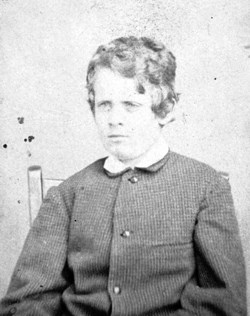
NPS Photo A Family of Artists (1852 to 1873)The fourteenth of sixteen children, Julian Alden Weir was born August 30, 1852, at West Point, New York. He was the son of Robert Walter Weir and his second wife, Susan Martha Bayard Weir. From the beginning, Julian showed an early interest in art; one that was not surprising, given that his fellow family members were engaged in the same profession. His father, a prominent painter of portraits and historical subjects, was professor of drawing at the U.S. Military Academy. His older brother, John Ferguson Weir, was a well-known painter and was appointed the first director of the Yale School of Fine Arts in 1869. Julian's family offered him encouragement in his own career as a painter and, at seventeen, Julian enrolled in art classes at the National Academy of Design. From 1873 to 1877, he studied in Europe, mainly in Paris at the Ecole des Beaux-Arts. He was sent off with the blessing of his father, who told Julian: "Don't return, old boy, until your veins flow with the rich mother's milk of Art, fatten on it, and then let your own genius ripen with the experience of it." 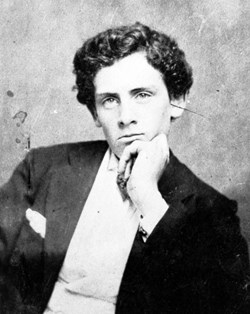
NPS Photo Studies in Europe (1873 to 1877)Weir's four years in Europe were exactly the intense experience with art his father wanted for his son. Julian not only studied techniques, but also discovered the rich art history Europe had to offer. Weir traveled extensively, enraptured by visits to rural France, Spain, Holland, England and seeing the artwork and scenery they presented. "Yes John," Weir wrote to his brother from Holland, "a man could afford to starve for the sake of seeing these great wonders." Back in Paris, worn out from his travels, Weir spent his Saturday afternoons at the Louvre museum for "recuperation." Throughout, Weir continued his own art studies with Jean-Léon Gérôme, who was himself considered a master. Gérôme's teaching was effective, and Weir won the top award in Gerome's studio. Weir also exhibited at the Paris Salon. Yet even as Weir learned the strict rules of art in the academic style, he was already formulating his own ideas, which would foreshadow his later switch to Impressionism. "To me," he wrote in 1876, "there are no rules except those which your own feelings suggest and he who renders nature to make one feel the sentiment of such, to me is the greatest man." Return to New York (1877 to 1882)When Weir left Paris in 1877, he pondered a comment from a Frenchmen he had met: "He thought America was going to be a great country for art. I hope certainly this is true." With this in mind, he returned to New York City and established himself as a portrait and still life painter, as well an art teacher at the Art Students League. He helped to found the Society of American Artists, a group formed to exhibit their own works separate from the rigid standards and exclusive environment of the Academy. Weir also banded with his aspiring peers through The Tile Club. Formed in 1877, this group of up and coming artists included William Merritt Chase and Winslow Homer, The Tile Club met weekly -- supposedly to paint tiles. The group really functioned as social club, with several outings that were "in search of the Picturesque," and the opportunity for "good talk and the companionship of men who spoke the same artistic language."
While in New York, Weir also took on the role of art buyer and collector. He made additional trips to Europe in 1878 and again in 1880- 1881. These trips were made both to study and also to buy art for himself and New York art collectors such as Erwin Davis. 
NPS Photo In January of 1882, one of Weir's drawing students brought her friend to a lesson. The new student was Anna Dwight Baker from Windham, Connecticut. Within three weeks, Julian and Anna had fallen in love and were engaged. Shortly after their engagement, another major event took place. Erwin Davis wanted a painting that Julian acquired in Europe so much that he offered Weir a deal. Davis would trade a 153-acre farm in Branchville, Connecticut for the painting -- plus $10.00. Weir wrote to Anna on June 17, 1882 commenting that, "If I go up to Ridgefield tomorrow, I will look at the 155-acres and see it they are habitable, if so we might have that as a sort of hunting lodge for part of the season."
Weir agreed to the deal with Davis and on July 19, 1882, for a painting and ten dollars, he received the 153-acre Branchville farm. Weir and Anna were married the next year on April 24, 1883. A New Home in Branchville (1882 to 1893)The couple's honeymoon took them to Europe for six months, during which Weir's brother, John, was in charge at the Branchville farm. He regularly wrote to Julian, saying "I advise you to hang on to this place, old boy; a 'lonesome lodge' which a pleasant place of retreat in times of storm or drought-is no bad thing to have-for an artist-keep it trim and untrammeled and you will find it a haven of refuge." Weir, abroad in Venice, found himself yearning for his rural retreat. He wrote to John, "Anna and I have both often wished to be at old Branchville." They returned to the United States in September 1883, and Weir made Branchville his primary residence for the next thirty-six years. 
NPS Photo Tragedy struck in the middle of all this success. Anna's sudden death in 1892 due to complications from childbirth was a shattering blow. She died one week after giving birth to their youngest daughter, Cora. Weir handled the tragedy by leaving Branchville and spending several months in Chicago where he immersed himself in painting one of the murals for the Manufacturing and Liberal Arts Building at the World's Columbian Exposition. Anna's sister, Ella, was available to take charge of the baby and her two older sisters while Julian was away. Letters between Julian and his sister-in-law reveal his gradual realization that Ella could fill the void in his life. They were married in Boston in October 1893. 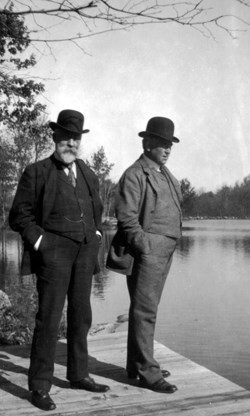
NPS Photo Impressionism and The Ten (1893 to 1911)Weir's reputation as a landscape painter and leader of the American Impressionists grew through the 1890s. During the winter of 1897-98, Weir joined his friends Childe Hassam, John Twachtman, and seven other like-minded artists in forming a new artists' group known as the "Ten American Painters," or "The Ten." This group provided an alternative to the staid exhibitions of the National Academy of Design and the now stagnant Society of American Artists, from which Weir had resigned. This new art group had a better energy and vowed to move towards a "greater quality of art." There were many exhibitions in the following years.
Back at Branchville, Weir continued to use the landscape for inspiration and made improvements to the farm. He constructed a pond for fishing in 1896 with money he had won from a first-prize painting he entered in an art show. In 1907, he acquired a neighboring farm, bringing his land total to 238 acres. He also expanded the original farmhouse thrice. This provided Weir with a space to accommodate friends and guests at his beloved retreat. Many artists spent weekends with Weir-fishing, hunting, drinking homemade cider, discussing philosophy and of course, painting. Hassam, Twachtman, Albert Pinkham Ryder and John Singer Sergeant were among the artists who visited Weir's farm and were inspired by the landscape. 
NPS Photo 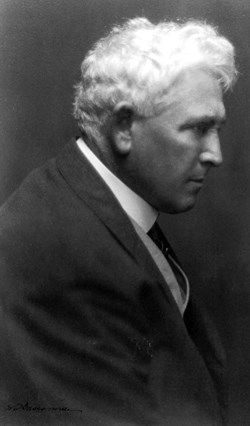
NPS Photo The Final Years (1911 to 1919)Weir, and many of his artist friends, exhibited in Armory Show of 1913 - an international show of over three hundred artists that boasted the largest attendance of an art exhibition in New York. Over 100,000 people attend and saw the many works exhibited. The Armory Show marked the introduction of new "modern" artists like Marcel Duchamp and Pablo Picasso. With the success of the show, Weir realized that "these young artists are getting at the real thing; they are the ones to watch. Our work is a thing done." Nonetheless, this show was just one event in the early 1900s that marked Weir's establishment as a respected artist. Critical acclaim ultimately brought Weir to the forefront of the American art establishment.
In 1915, he was elected President of the National Academy of Design and granted membership in the American Academy of Arts and Letters, the Association of American Painters and Sculptors, and the Board of Directors at the Metropolitan Museum of Art. Weir was appointed to the National Commission on Fine Arts as "Painter Member" in 1916 and received honorary degrees from Princeton (1916) and Yale (1917).
Weir died on December 8, 1919 due to heart disease. During his illness, he was comforted by his time at the Branchville farm, where he would sit on the porch, observe the farm's natural beauty, and reflect on his full life. As Weir wrote: "Really, I know not what I am best at. I believe I am a fisherman, dreamer and lover of nature…and if I lived to 120 I might become an artist." 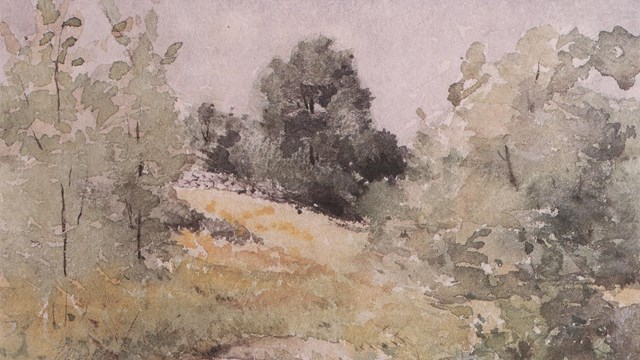
Julian Alden Weir Artwork Gallery
Julian Alden Weir spent nearly four decades painting at his farm. Click to see more of Weir's paintings and etchings. 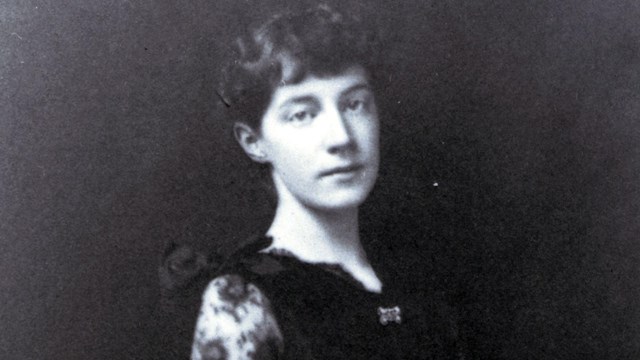
Anna Baker Weir (1863-1892)
Anna was muse, wife, and advocate of Julian Alden Weir before her untimely death at age 29. 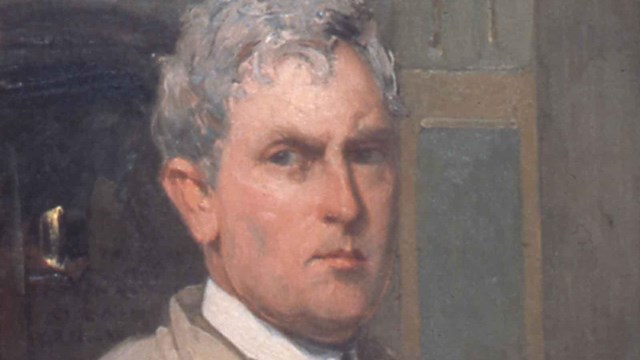
Meet the Artists
Learn about the prominent artists and their family members who lived and worked here. |
Last updated: September 11, 2020
